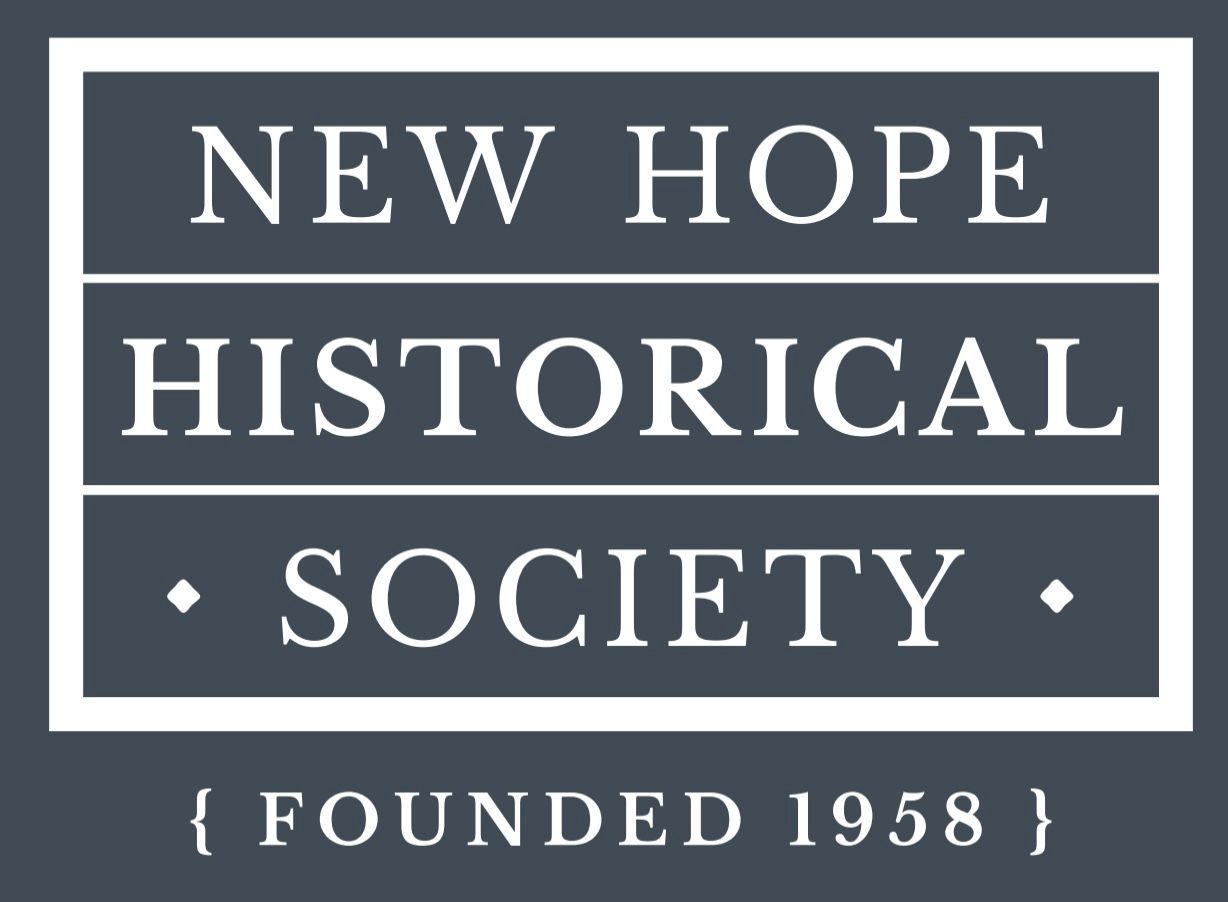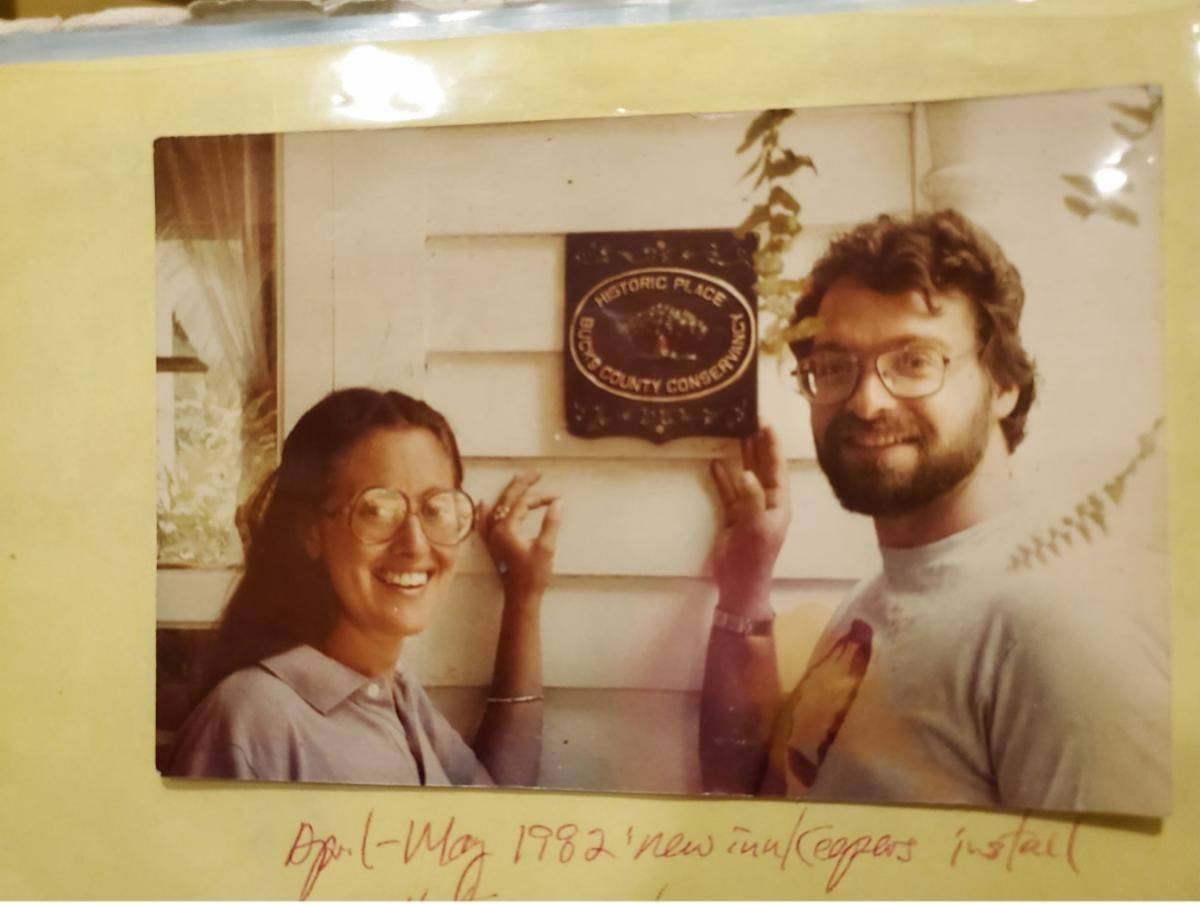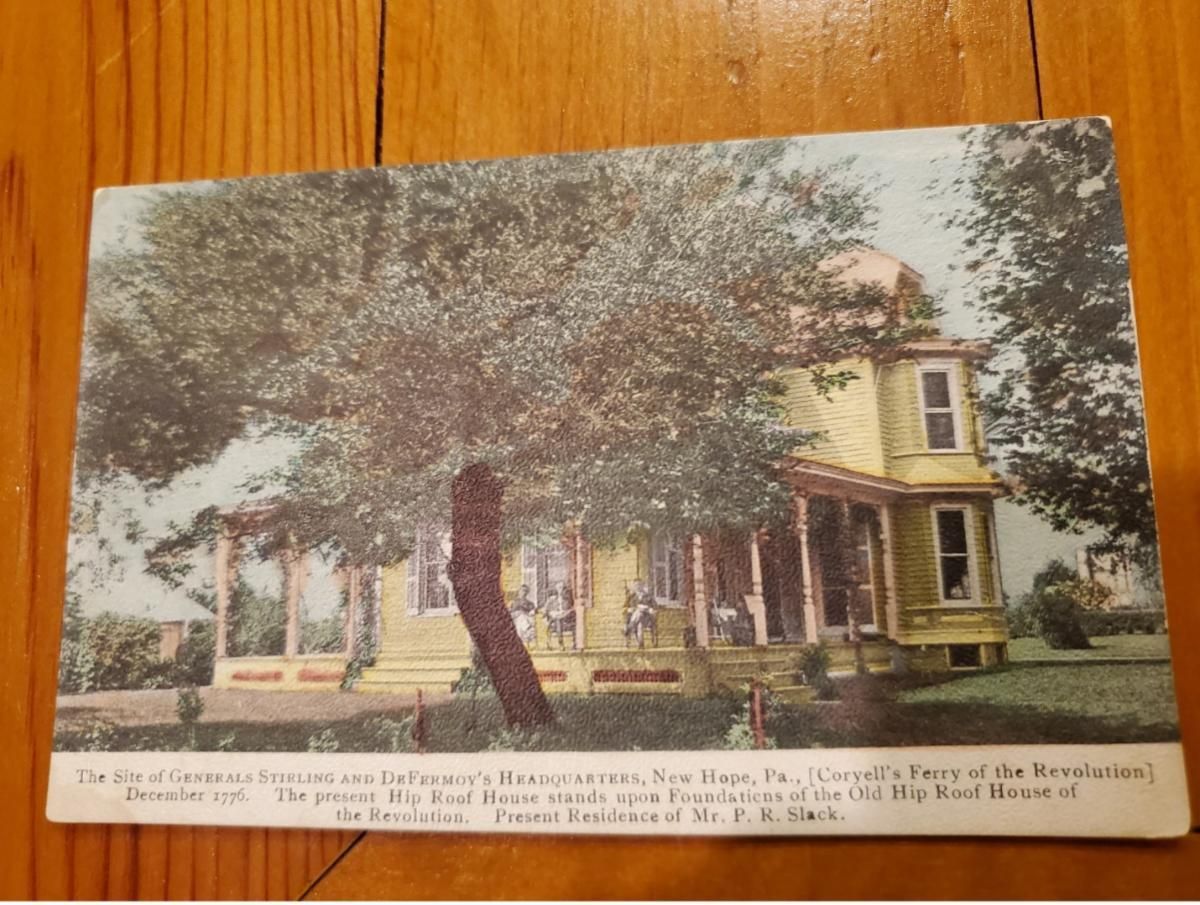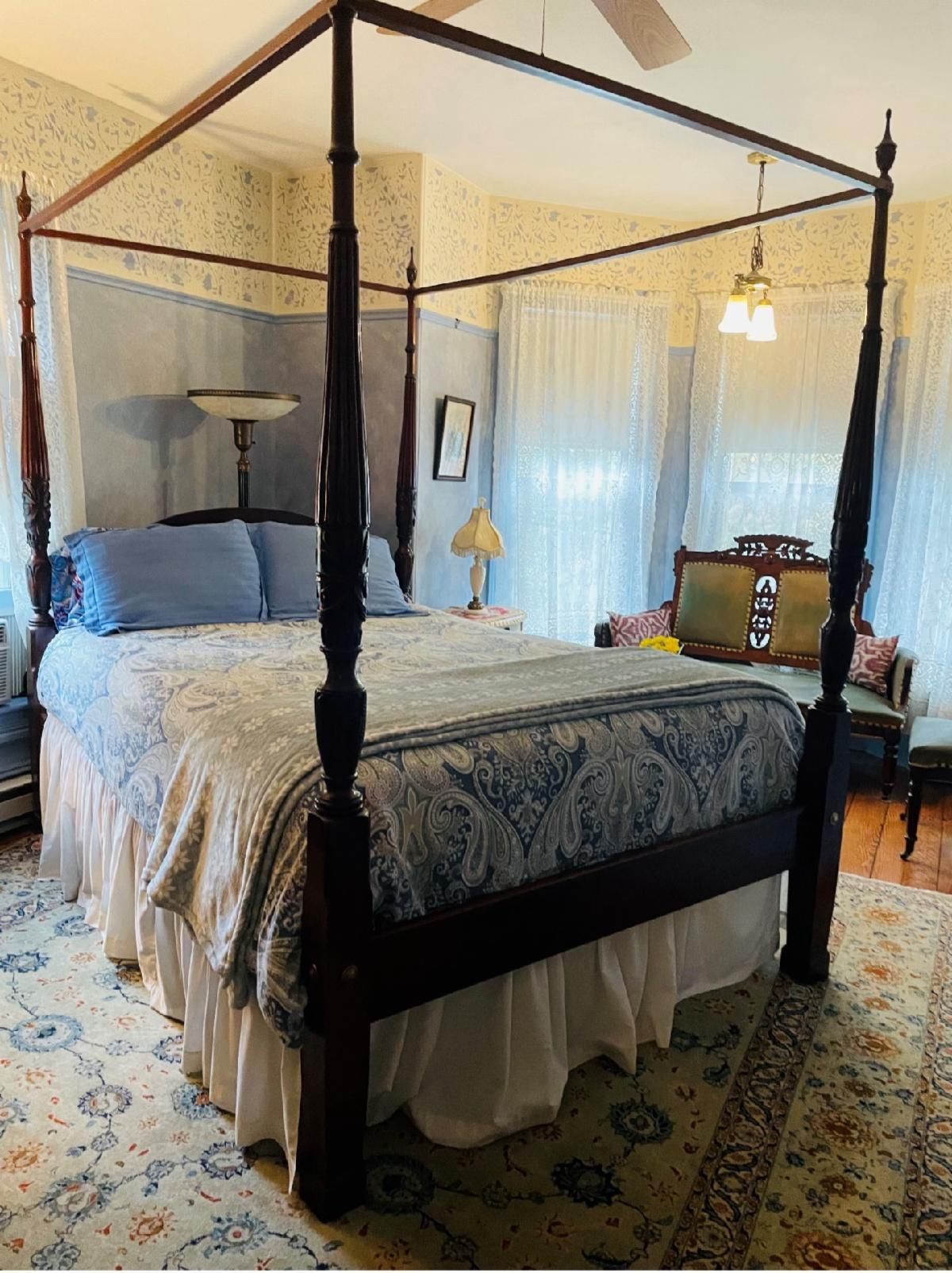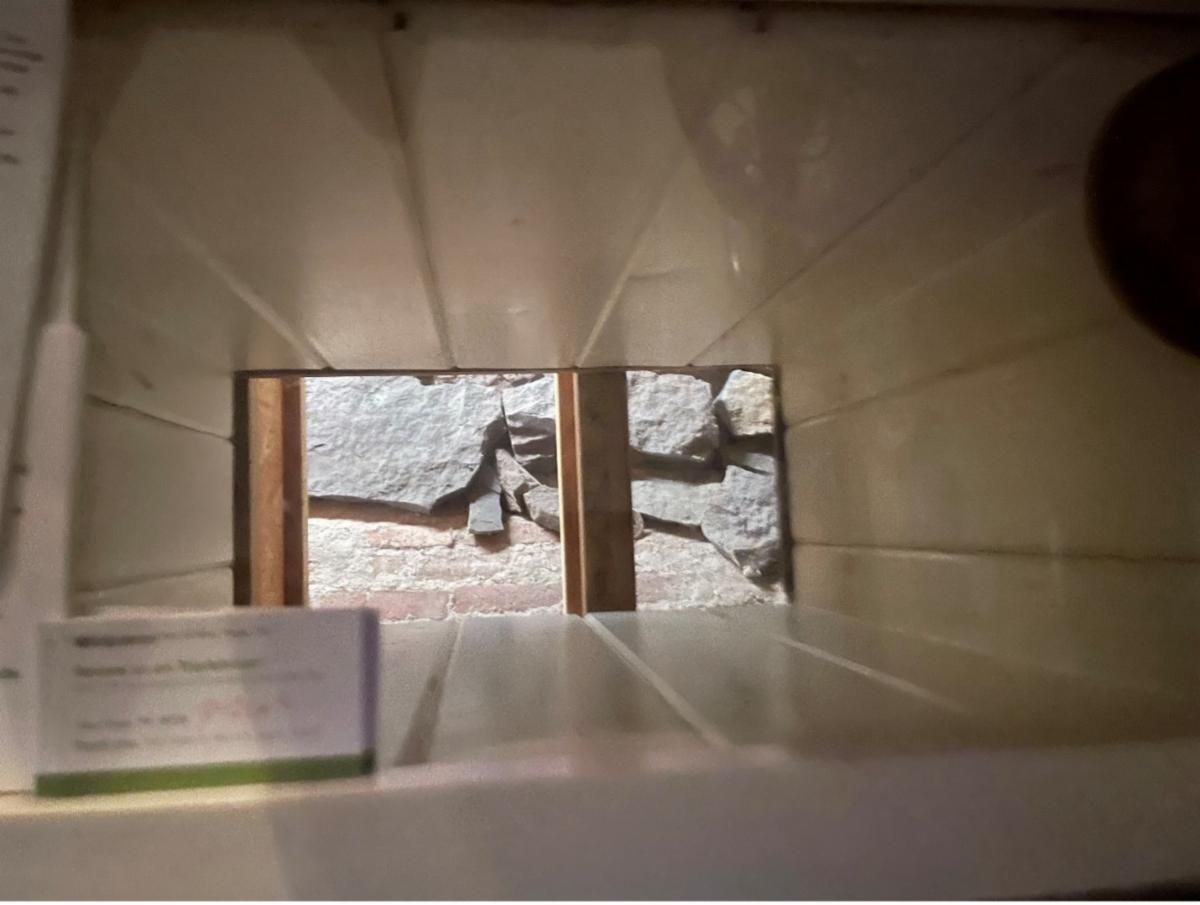Contact Info
New Hope Historical Society
at The Parry Mansion
45 South Main Street
New Hope, Pennsylvania 18938
Phone: 215.862.5652
Email: info@newhopehistorical.org
The Wedgwood Inn
Reading that the historic Wedgwood Inn was up for sale, the New Hope Historical Society's Archives Team felt it was the perfect time to visit the inn, explore its history, and update our building records.
On a recent afternoon, our team met with husband-and-wife owners Carl Glassman and Dinie Silnutzer. They have owned the Wedgwood – note this correct spelling – since 1982. While making additions over the years they have kept much of the original design intact. In addition, they discovered a historic tunnel that was possibly used as part of the underground railroad.
Then new owners Dinie and Carl in 1982 photograph with a plaque from Bucks County Conservancy.
The current structure was built by Mary Ann Slaughter in 1870 on the stone foundation of the original 1720 “old hip-roof” house. In the 1907 edition of W. H. H. Davis’ History of Bucks County, Davis states the older house was used as headquarters by patriot Alexander Lord Stirling during the Revolutionary War. Washington and his troops were camped across what is now Bridge Street from December 8, 1776, to December 25, 1776, just before the historic Battle of Trenton. That became a victory for the Continentals and an emotional turning point in the war. Inn owner Carl Glassman explains that there was a cannon in the front yard facing the slope down to Ferry Street in case the British were to approach. At that time there were mostly fields between the house and the river. As a salute to its role in the revolution, the house subsequently became known as “The Old Fort” or “The Headquarters House.”
Postcard noting the then owner as Mr. P. R. Slack. Title records in NHHS files indicate the Slack family were owners of the property during the late 1800’s and early 1900’s.
In the 1930’s the house began to be used as a rooming house, a role that continued through several owners and decades. Carl’s and Dinie’s tenure has led to the expansion of the mansion with a rear addition in 1999, and upgrades such as private baths for each of the 10 lodging rooms. The construction led to the discovery of an underground wood and stone tunnel running from the kitchen to a gazebo located on the east side of the house. The tunnel was accessed inside the house from the wooden kitchen floor. The residue of gunpowder and candles was found in the tunnel. It is theorized that the tunnel was likely used to store ammunition for the Continental Army during the revolution. Later it may have served as a hiding spot for the enslaved on the underground railroad as they awaited a friendly mule barge northbound on the Delaware Canal. The current owners state that two of their visitors are said to have seen the ghost of a 12-year-old girl who is felt to be an enslaved person looking for her parents.
Famous guests have included politician & author Ralph Nader, William Shatner of Star Trek, and Antoni Poworski of Queer Eye. Nader volunteered to speak to a class in the school across the street.
Architecturally the house is Victorian style with deep eaves, a projecting two-story bay window, a wraparound verandah with scrolled brackets, and a porte-corchere built initially to be the coach entrance for women. Until recently there was a slate roof. The clipped gables may be an echo of the original building. Inside are found walls stenciled by local artist Cheryl Raywood, an old claw foot tub, and a Mercer tile fireplace, along with many original decorative features. English Wedgwood plateware decorates the house.
At one time, the property extended as far as the Aquetong Creek. Southern parts of the property were sold off years ago and newer structures were constructed there. Besides the gazebo mentioned above, there is a view that captures that of the famous Joseph Pickett painting of New Hope. In addition, a Ray Faunce sculpture from the New Hope Arts Outdoor Sculpture Project, Triffids, can be seen from Bridge Street.
Many thanks to Carl and Dinie for sharing their historic property with us as we continue to explore the history of New Hope through its buildings and its current residents.
The Parry Mansion Museum Archives Team is a team of passionate and energetic volunteers who bring diverse, professional backgrounds to advance our archives with programs such as this monthly series “Beyond the Door,” and individual and community research request fulfillment and so much more. Many thanks to the Archives Team!
Beyond The Door
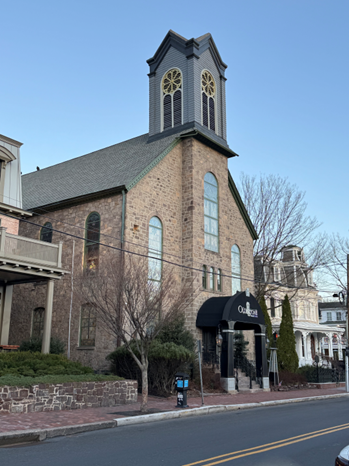


Contact Info
New Hope Historical Society
at The Parry Mansion
45 South Main Street
New Hope, Pennsylvania 18938
Phone: 215.862.5652
Email: info@newhopehistorical.org
Mailing Address:
PO Box 41
New Hope, PA 18938
© 2022 All Rights Reserved | New Hope Historical Society
Website powered by Neon One
